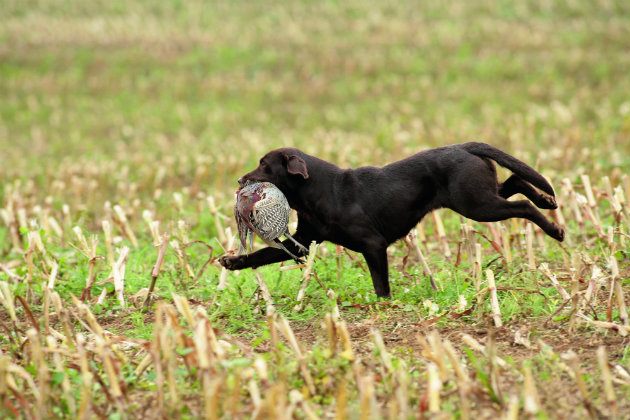Win CENS ProFlex DX5 earplugs worth £1,149 – enter here
How to treat paw injuries in the field

A: It can affect a dog but tetanus is relatively uncommon, particularly if a wound bleeds to any extent. There is no equivalent vaccination available for dogs as there is for humans.
Treatment for paw injuries
Though small wounds are probably best left open to heal naturally and larger wounds may require stitches, when you are out working your dog some form of temporary bandage is best employed, if only to keep the wound free of further contamination. Don’t just bandage the foot — always apply a bandage that goes further up the leg as this will help to prevent the bandage slipping off.
Never apply it too tightly and always put padding underneath. If the bandage is too tight or it slips down the leg, blood circulation can be impeded. Tissues starved of vital blood will become damaged — at worst the foot may have to be amputated.
Wash the wound
Before you apply the bandage, wash the wound in clean water and ensure there is nothing in the wound. Bits of glass or a thorn usually feel “gritty”, indicating there is something in the pad that, if you can’t, your vet will need to remove.
To stop any bleeding you will need to apply a “pressure” bandage. Start by trapping the bandage behind the leg, well above the “knuckle/wrist” (or hock). Run the bandage down the leg, under the foot, and back up in front of the leg.
Make one turn to secure the top of the bandage then wind down the leg, firmly, in overlapping turns to the foot. Make sure that you enclose the foot. Then similarly wind back up the leg to where you started, repeat, applying a little more pressure, and tie off. Remove the bandage after one to two hours, when any bleeding should have stopped. Reapply only if necessary and take your dog to the vet at the earliest opportunity so the wound can be examined properly.
Related Articles
Get the latest news delivered direct to your door
Subscribe to Shooting Times & Country
Discover the ultimate companion for field sports enthusiasts with Shooting Times & Country Magazine, the UK’s leading weekly publication that has been at the forefront of shooting culture since 1882. Subscribers gain access to expert tips, comprehensive gear reviews, seasonal advice and a vibrant community of like-minded shooters.
Save on shop price when you subscribe with weekly issues featuring in-depth articles on gundog training, exclusive member offers and access to the digital back issue library. A Shooting Times & Country subscription is more than a magazine, don’t just read about the countryside; immerse yourself in its most authoritative and engaging publication.







